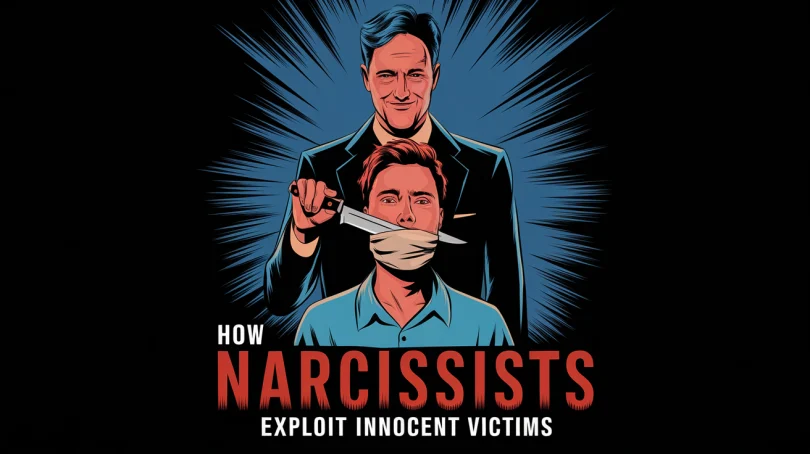Scapegoating is a pervasive and destructive behavior often observed in relationships involving narcissists. It serves as a mechanism through which the narcissist externalizes their inner turmoil, insecurities, and rage onto a designated target. This article explores the nature of scapegoating, its psychological roots, the various forms it takes, and its profound impact on those who endure it.
The Nature of Scapegoating: A Primitive Form of Self-Harm
At its core, scapegoating can be seen as a primitive form of self-harm for the narcissist. It’s as though they punish another person to alleviate an inner rage stemming from their own perceived deficiencies. This paradoxical and venomous behavior originates from a deep, dark place within the narcissist a place of insecurity and self-loathing that defies rational explanation.
Every narcissist, much like a bully, requires a victim, and the scapegoat becomes their emotional punching bag, absorbing the brunt of the narcissist’s psychological blows.
In narcissistic family systems, scapegoating is especially common. Anyone who has experienced a narcissistic parent likely recognizes this dynamic either as the scapegoat or as a witness to a sibling or another family member bearing the burden. The scapegoat receives the harshest treatment, serving as a repository for the narcissist’s rage, anger, and misery.
Why Narcissists Scapegoat: The Role of Insecurity
The driving force behind scapegoating is the narcissist’s profound insecurity. By targeting someone whether out of perceived weakness, threat, or vulnerability, the narcissist projects their unresolved conflicts and anxieties onto others.
This act of lashing out creates a false façade of strength, masking their internal weakness. Scapegoating is not just an attack on the victim; it’s a desperate attempt by the narcissist to regulate their emotional instability, using the scapegoat as a tool to avoid confronting their shame and inadequacy.
Forms of Scapegoating: Pathways of Abuse
Scapegoating manifests in multiple ways, each tied to how the narcissist perceives their target. These pathways reveal the complexity of the narcissist’s motivations and the tailored nature of their abuse.
Scapegoating the “Weak” or “Undesirable”
The simplest form of scapegoating targets those the narcissist deems weak or undesirable. In families, this might be the sensitive child, the physically small sibling, or someone who doesn’t conform to the narcissist’s standards perhaps a child who doesn’t resemble the parent or pursue the “right” academic path.
In intimate relationships, a kind or empathic partner might be devalued over time, perhaps for something as natural as aging. At work, it could be the employee who is kinder or less conforming, seen as “less than” by the narcissist. This dynamic mirrors classical bullying, with the narcissist rationalizing their cruelty as justified by the scapegoat’s perceived flaws.
Scapegoating the Threat
Alternatively, narcissists may target those they perceive as individuals who outshine them in intelligence, attractiveness, success, or strength. In a family, a child who excels beyond the narcissistic parent might be belittled to diminish their achievements.
In relationships, a partner’s career success or financial independence could trigger this response. At work, a quick-witted colleague might become the focus of the narcissist’s ire. Unable to tolerate others’ strengths, the narcissist attacks to neutralize the perceived threat, often without consciously acknowledging their envy.
Scapegoating the Vulnerable
Narcissists also scapegoat those who display vulnerability, particularly emotional openness, which they equate with weakness. A healthy, self-aware person who shares their feelings might unwittingly provoke a narcissist, who fears genuine emotion and empathy.
This can manifest as shaming the vulnerable individual or exploiting their openness by sharing it inappropriately with others. Ironically, the emotionally open scapegoat is often the stronger one, but their authenticity poses too great a threat to the narcissist’s fragile façade.
Scapegoating as a Mirror of Self-Loathing
The most psychologically compelling form of scapegoating occurs when the narcissist targets someone who reflects their own flaws or unacknowledged desires.
This could be straightforward, like a parent scapegoating a child who struggles with sports, or paradoxical, such as attacking a warm, beloved spouse because the narcissist knows they lack that same warmth. Here, the scapegoat becomes a painful reminder of the narcissist’s shortcomings, fueling a cycle of rage and projection.
The Devastating Impact of Scapegoating
Scapegoating inflicts profound harm, particularly when it occurs in childhood. For children of narcissistic parents, the constant blame and abuse erode trust, safety, and self-esteem, fostering lifelong anxiety and a pervasive sense of inadequacy. Ostracized and excluded, they carry these wounds into adulthood, often struggling with self-doubt and unhealthy relationships that echo their early experiences.
In workplaces, scapegoating creates a hostile environment, leading to trauma and long-term stress. Cultures that prioritize dominance or enable narcissistic leaders can perpetuate this dynamic, with bystanders silently allowing the abuse to avoid becoming targets themselves. The relief of not being the scapegoat often keeps these toxic systems intact.
Breaking Free: The Scapegoat’s Resilience
Despite the pain, scapegoats possess remarkable resilience. Many are driven to escape toxic environments as adults, seeking distance from the narcissistic family or workplace. This flight can be a saving grace, allowing them to reclaim their identity.
Setting boundaries, going “gray rock” (emotionally disengaging), or cutting contact entirely can diminish the scapegoat’s powerlessness. When bystanders enable the narcissist by staying silent, disengaging from them as well becomes a necessary act of self-preservation.
What Happens When the Scapegoat Leaves?
When a scapegoat exits the narcissist’s orbit, the narcissist loses their primary outlet for rage. Initially, they may lash out remotely via texts, emails, or smear campaigns attempting to pull the scapegoat back.
If the scapegoat remains resolute, the narcissist seeks a new target, often turning on former enablers or less prominent victims. This shift can expose the narcissist’s behavior to others, though some may try to lure the scapegoat back to restore the old dynamic. Without a scapegoat, the narcissist’s rage may turn inward, leaving them deflated and darker.
For the scapegoat, leaving is an act of courage, breaking the trauma bond that ties them to the narcissist. It’s not their responsibility to save others from the narcissist’s wrath each person must find their way out.
The Scapegoat’s Legacy and Healing
Being a scapegoat does not define a person. Those who escape can harness their empathy often forged in the fires of their suffering to become advocates, champions of the oppressed, and keen detectors of red flags. Therapy with a trauma-informed professional can help them shed the negative self-beliefs instilled in childhood, recognizing that the narcissist’s abuse was a projection of their failings, not a reflection of the scapegoat’s worth.
Scapegoats often excel as parents, fiercely protective and determined to break the cycle of abuse. By paying forward the empathy they were denied, they transform their wounds into light, proving that healing is possible and that they are more than enough.
In short
If you witness scapegoating, especially of a child, intervene. Offer support, affirm their worth, and challenge the narrative that it’s their fault. For adult scapegoats, escaping or setting boundaries is key. Collectively, by refusing to tolerate this toxic dynamic, we can begin to dismantle it, one act of advocacy at a time.




Leave a Comment